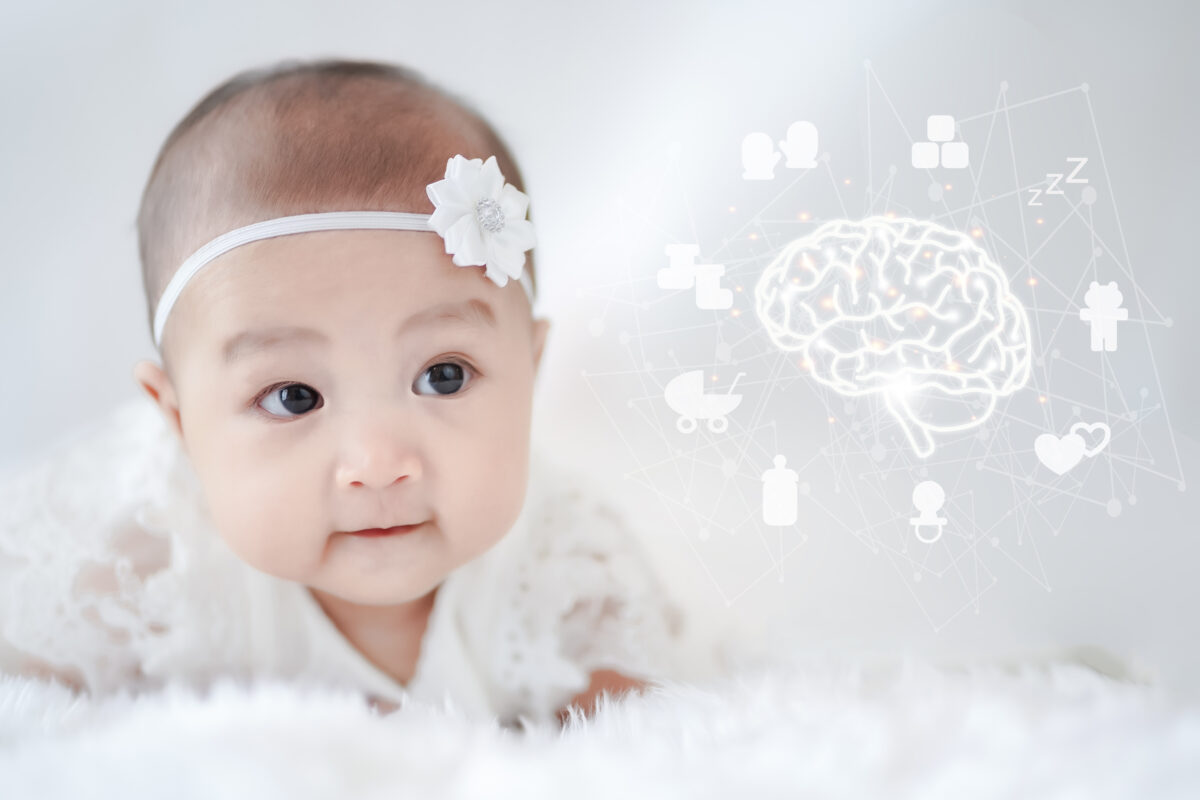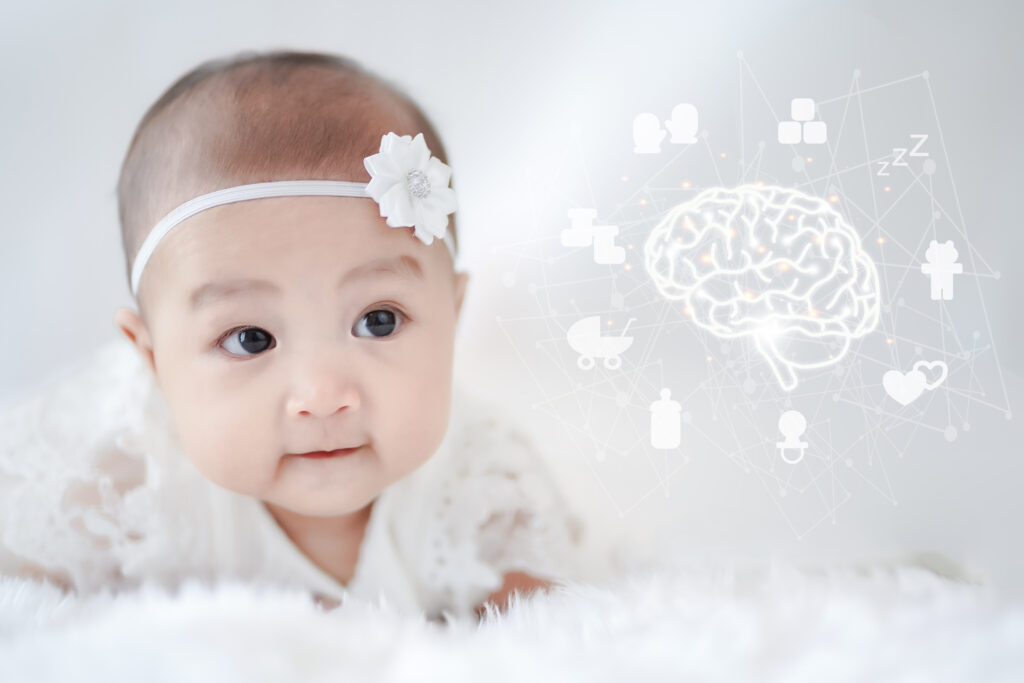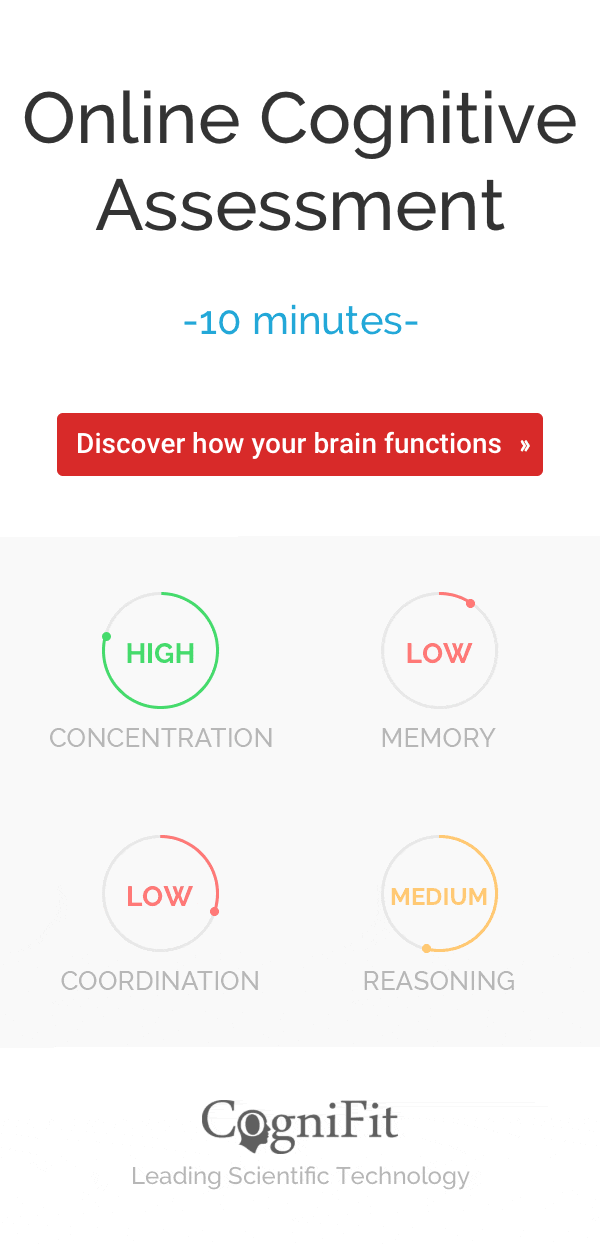
What Happens to a Baby’s Brain at Birth? New Research Has Answers
Have you ever wondered what happens to a baby’s brain during the momentous transition from womb to world? A new study, published in the journal PLOS Biology, provides fascinating insights into this critical period. Researchers have discovered that birth triggers rapid changes in brain connectivity, particularly in key regions like the subcortical, sensorimotor, and superior frontal networks. These changes help newborns adapt to their new environment and form the foundation for lifelong cognitive development.

Note: This article is intended for general information and educational purposes. It summarizes scientific research in accessible language for a broad audience and is not an official scientific press release.
How the Study Was Conducted
The Research Team and Goals
This groundbreaking research was led by Lanxin Ji and Moriah Thomason from New York University School of Medicine. Their goal was to explore how brain functional networks develop during the crucial transition from fetal to neonatal life. Although the early stages of brain development have been studied before, this research focused specifically on the immediate impact of birth—a largely uncharted area in neuroscience.
Data Collection and Methodology
According to Neuroscience News, the study utilized a large dataset of functional magnetic resonance imaging (fMRI) scans to track developmental trajectories of brain networks. The sample included 126 fetal scans and 58 infant scans from 140 participants, covering 25 to 55 weeks of post-conceptual gestational age. This allowed the researchers to map the changes occurring in the brain’s resting-state functional connectivity (RSFC), which measures communication between brain regions during rest.
The research analyzed how different brain networks reorganize at birth, emphasizing changes in key areas like the subcortical network, which plays a critical role in relaying information throughout the brain.
A Unique Approach
While previous studies often focused on brain structure or later stages of development, this research zeroed in on the specific brain connectivity changes that occur during the birth transition. By combining fetal and neonatal imaging data, the researchers were able to create a more comprehensive picture of early brain development.
Key Innovations of the Study
This study stands out for several reasons:
- Focus on the Birth Transition: Unlike earlier studies that examined general brain development, this research specifically analyzed how birth impacts brain connectivity.
- Advanced Imaging Techniques: The use of fMRI allowed the researchers to capture real-time changes in brain activity, providing a detailed view of connectivity patterns.
- Insights into Regional Growth Patterns: The study revealed that different brain regions undergo unique growth trajectories, with some showing dramatic changes while others remain stable.
- Integration of Fetal and Neonatal Data: By combining data from both stages, the study offers a more complete understanding of how the brain prepares for and adapts to life outside the womb.
- Focus on Communication Efficiency: The research highlighted the role of the subcortical network in improving communication efficiency, which is essential for the brain’s overall functionality.
Cognitive Abilities and Early Development
The Role of Functional Connectivity in Cognition
Functional connectivity plays a foundational role in shaping early cognitive abilities. At birth, the brain undergoes a reorganization of networks that supports essential cognitive functions, such as sensory processing, attention, and problem-solving. These changes are not only critical for survival but also for laying the groundwork for lifelong learning and adaptation.
Newborns begin to process their surroundings immediately after birth. The reorganization of the sensorimotor and superior frontal networks ensures they can respond to basic stimuli, such as touch, sound, and light. This connectivity enables the brain to create associations, helping infants to distinguish familiar faces, voices, and objects from unfamiliar ones. The ability to recognize and interact with caregivers is one of the earliest examples of how cognitive processes develop through enhanced neural connections.
Subcortical Network as a Central Hub
One of the most important findings of the study is the role of the subcortical network as a central hub for neural communication. This network acts as a relay center, facilitating communication between the brain’s cortical and subcortical areas. It integrates sensory inputs and helps coordinate motor responses, allowing infants to adapt their movements and actions based on environmental feedback.
For example, when a baby feels hunger and cries, the subcortical network helps process the sensation of hunger while also coordinating motor activity to signal their need for food. This ability to integrate sensory and motor responses represents the early building blocks of cognitive and emotional regulation.
Neural Plasticity: The Brain’s Adaptability
The concept of neural plasticity—how the brain adapts and forms new connections—is particularly evident during this stage of development. Birth marks the beginning of significant sensory exposure, which fuels rapid cognitive growth. For instance, visual processing improves as newborns are exposed to light and movement, while auditory processing becomes more refined through exposure to speech and environmental sounds. These sensory experiences not only stimulate brain activity but also encourage the formation of new neural pathways, strengthening cognitive capabilities.
Milestones of Early Cognition
The changes observed in brain connectivity align closely with cognitive milestones that infants achieve in the first few months of life:
- Recognition of Familiar Faces: By a few weeks old, infants show a preference for faces, especially those of their caregivers, thanks to improved communication within the visual and superior frontal networks.
- Response to Speech and Sounds: Neural pathways related to auditory processing enable newborns to differentiate tones and respond to speech, forming the basis for future language development.
- Motor Coordination: The sensorimotor network supports movements such as grasping, sucking, and coordinated eye-tracking, which are critical for physical and cognitive growth.
- Early Social Behaviors: Infants demonstrate social behaviors, such as smiling and gazing, as a result of functional connectivity in regions associated with social cognition.
Environmental Factors and Cognitive Development
The environment plays a pivotal role in shaping an infant’s cognitive growth. Stimulating surroundings enriched with colors, textures, and sounds can accelerate brain development by reinforcing neural connections. Responsive caregiving, including talking, singing, and making eye contact, is particularly effective in fostering cognitive and emotional growth.
Conversely, environments that lack stimulation or are stressful can hinder neural development. Factors such as prolonged exposure to stress hormones or limited interaction with caregivers can disrupt the formation of critical neural pathways, potentially leading to developmental delays. This highlights the importance of creating a nurturing and interactive environment to support healthy cognitive development.
Long-Term Implications for Cognitive Health
The early years of life are a window of opportunity for cognitive health. Positive experiences during this time can boost intellectual, social, and emotional capacities, while negative influences can have lasting effects. The findings from this study emphasize the importance of early interventions in cases of developmental delays or adverse conditions. Understanding the mechanisms of neural plasticity and connectivity can guide strategies for optimizing brain health from infancy through adulthood.
What Happens to a Baby’s Brain at Birth? Key Findings
The study uncovered several important conclusions about how the brain changes during the transition from fetal to neonatal life:
- Region-Specific Growth: Different brain regions show unique growth patterns. For example, the subcortical network undergoes significant reorganization, while some other areas show minimal changes.
- Enhanced Communication Efficiency: The subcortical network becomes more efficient in relaying information, acting as a central hub for neural activity.
- Gradual Changes in Sensorimotor and Frontal Regions: Connectivity in the sensorimotor and superior frontal networks strengthens gradually, suggesting a steady process of refinement and optimization.
- Dramatic Connectivity Surge at Birth: Birth triggers a rapid increase in functional connectivity across several key regions, helping the brain adapt to external stimuli.
- Foundations for Future Research: The findings pave the way for studies on how factors like prenatal adversity, sex differences, or prematurity affect brain development.
Why This Matters: The Impact of Early Brain Development
For Science
This research provides a new lens through which to understand the brain’s adaptability and resilience. By mapping changes during the birth transition, scientists can better explore the mechanisms underlying neural plasticity—the brain’s ability to reorganize and adapt.
For Medicine
The findings have significant implications for pediatric healthcare. Identifying how the brain develops during the earliest stages of life can help doctors recognize developmental delays or neurological disorders earlier. For example, premature infants or those exposed to prenatal adversity may benefit from interventions tailored to optimize their brain development.
For Education
The study underscores the importance of early cognitive stimulation. Environments rich in sensory and motor experiences can further support the brain’s natural growth patterns, laying the foundation for learning and social development.
For Society
Understanding early brain development emphasizes the importance of prenatal care and early childhood support. Policies that promote maternal health, reduce stress during pregnancy, and provide resources for new parents could have far-reaching benefits for public health.
Conclusion
The transition from womb to world marks a critical period of transformation for a baby’s brain. This study highlights the dramatic changes that occur in functional brain connectivity at birth, revealing how different regions reorganize to support adaptation to the external environment.
By focusing on region-specific growth patterns and communication efficiency, the research provides a deeper understanding of how the brain prepares for life outside the womb. These findings not only advance the scientific understanding of early brain development but also hold promise for improving healthcare, education, and societal well-being.
As researchers continue to explore how environmental factors shape neural networks, studies like this remind us of the incredible complexity and adaptability of the human brain, even in its earliest stages. Supporting children’s brain development from the start ensures a solid foundation for cognitive, emotional, and social growth. Early intervention and nurturing environments play a crucial role in maximizing potential and minimizing the risks of developmental challenges. By understanding how the brain adapts and grows during these formative moments, parents, educators, and healthcare providers can make informed decisions to foster healthy development and set children on a path to lifelong success.
The information in this article is provided for informational purposes only and is not medical advice. For medical advice, please consult your doctor.













